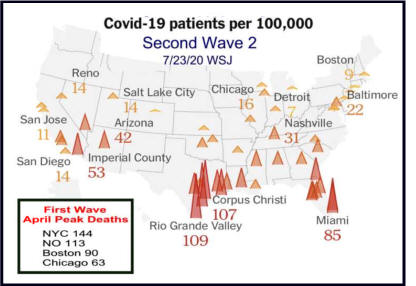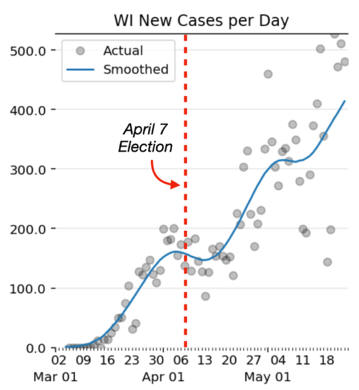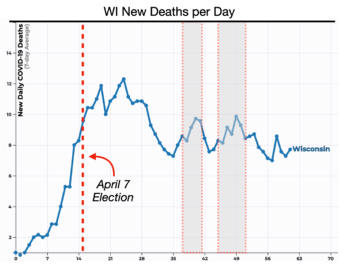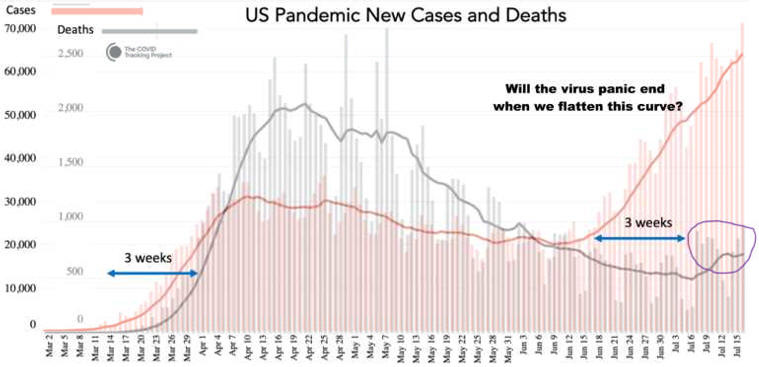Superspreaders are the roughly 10% of COVID-19 cases
that
appear to have caused around 80% of new infections.
Superspreading high risk events include indoor congregations
— such as at churches,
prisons, meatpacking plants, bars, restaurants, and nursing homes Case in point: Allison
James, of the CDC
for
Arkansas found a
March event at which a church had
35
out of around 92 attendees fall ill resulting in three
deaths.
Recommended
steps to
Limiting Superspreaders include
contact
tracing,
reducing crowd
density,
wearing masks,
changing seating layouts and improved ventilation.
Investigating Superspreaders
Why some people are
superspreaders remains
unknown.
The person's genetics, immune system, how much virus they shed, and
their behavior
(such as how
they speak, if they wash their hands often, if they socialize with
large groups)
all likely play a role. Topol says research is targeting this
phenomenon because
"if we knew the genomics or immunologic markers that these people have,
maybe there's something we could do."
But Adalja says, "It's less about the biology than it is about the
habits and interactions
that individuals with the virus have, and what types of events they go
to which puts
them into contact with many different people in a way that spreads the
virus."
Why is the Coronavirus so
good at Superspreading?
Three preliminary studies estimates that 10
to 20 percent of infected people cause about 80 percent of virus spread. Microscopic
droplets created by coughs or sneezes or even speaking results
in another person breathes them in the virus. Thus we have the "at least 6 feet
rule" and the "wearing
a mask in public rule."
But scientists are
concerned with smaller
longer-lasting aerosol
particles
that
spread through breathing or speaking (or flushing
a toilet)
called aerosols. They linger in the air for up to
three hours.
An infected person could seed a poorly ventilated indoor
space with virus without even getting physically close to
all the people they end up infecting.
Also, people typically have the highest level of the virus in their
system (making them infectious) right before
they develop symptoms
They
have
a much lower risk of spreading after five days of symptoms. But it also
has to do with a person’s “viral load”
— an amount that actually tends
to go down as symptoms wear on. A May study
suggests that people who had symptoms for more than eight days might not
actually be very infectious.
In Singapore four clusters caused 95 infections.
These findings indicate closed environments are
almost 20 times more likely to spur additional Coronavirus
infections. Loud talking and singing can spread more virus
than talking at a normal volume. Think singing at karaoke parties,
cheering at clubs, having conversations in bars, and
exercising in gymnasiums.”
Some current efforts to prevent Superspreading — like taking people’s
temperature before they enter a building — may help, but are not
foolproof.
Source |

More Covid-19 Stuff
Latest News
A Concise History
June 12 Summary
J uly
22 Death Analysis
Planning
the Economic Recover
What Comes Next
COVID 19 Death Cycle
Media Caused Hysteria?
OVID 19 Morality Thought Experiment
Fake News Covid-19 |


 n
n



